
Alfred Joseph Hitchcock was an English film director. He is widely regarded as one of the most influential figures in the history of cinema. In a career spanning six decades, he directed over 50 feature films, many of which are still widely watched and studied today. Known as the "Master of Suspense", Hitchcock became as well known as any of his actors thanks to his many interviews, his cameo appearances in most of his films, and his hosting and producing the television anthology Alfred Hitchcock Presents (1955–65). His films garnered 46 Academy Award nominations, including six wins, although he never won the award for Best Director, despite five nominations.

Psycho is a 1960 American horror film produced and directed by Alfred Hitchcock. The screenplay, written by Joseph Stefano, was based on the 1959 novel of the same name by Robert Bloch. The film stars Anthony Perkins, Janet Leigh, Vera Miles, John Gavin, and Martin Balsam. The plot centers on an encounter between on-the-run embezzler Marion Crane (Leigh) and shy motel proprietor Norman Bates (Perkins) and its aftermath, in which a private investigator (Balsam), Marion's lover Sam Loomis (Gavin), and her sister Lila (Miles) investigate her disappearance.

Rear Window is a 1954 American mystery thriller film directed by Alfred Hitchcock and written by John Michael Hayes based on Cornell Woolrich's 1942 short story "It Had to Be Murder". Originally released by Paramount Pictures, the film stars James Stewart, Grace Kelly, Wendell Corey, Thelma Ritter, and Raymond Burr. It was screened at the 1954 Venice Film Festival.

Suspicion is a 1941 romantic psychological thriller film noir directed by Alfred Hitchcock, and starring Cary Grant and Joan Fontaine as a married couple. It also features Sir Cedric Hardwicke, Nigel Bruce, Dame May Whitty, Isabel Jeans, Heather Angel, and Leo G. Carroll. Suspicion is based on Francis Iles's novel Before the Fact (1932).

Shadow of a Doubt is a 1943 American psychological thriller film noir directed by Alfred Hitchcock, and starring Teresa Wright and Joseph Cotten. Written by Thornton Wilder, Sally Benson, and Alma Reville, the film was nominated for an Academy Award for Best Story for Gordon McDonell.
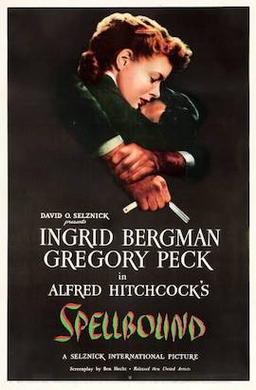
Spellbound is a 1945 American psychological thriller directed by Alfred Hitchcock, and starring Ingrid Bergman, Gregory Peck, and Michael Chekhov. It follows a psychoanalyst who falls in love with the new head of the Vermont hospital in which she works, only to find that he is an imposter suffering dissociative amnesia, and potentially, a murderer. The film is based on the 1927 novel The House of Dr. Edwardes by Hilary Saint George Saunders and John Palmer.
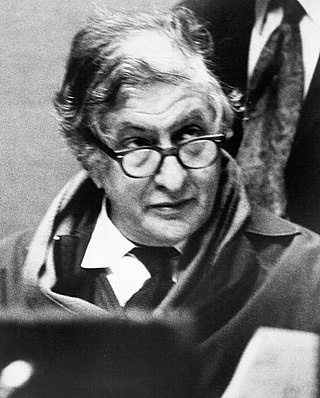
Bernard Herrmann was an American composer and conductor best known for his work in composing for films. As a conductor, he championed the music of lesser-known composers. He is widely regarded as one of the greatest film composers. Alex Ross writes that "Over four decades, he revolutionized movie scoring by abandoning the illustrative musical techniques that dominated Hollywood in the 1930s and imposing his own peculiar harmonic and rhythmic vocabulary."
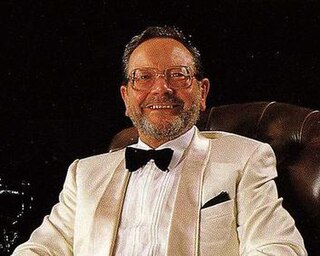
Ronald Alfred Goodwin was an English composer and conductor known for his film music. He scored over 70 films in a career lasting over fifty years. His most famous works included Where Eagles Dare, Battle of Britain, 633 Squadron, Margaret Rutherford's Miss Marple films, and Frenzy.

Notorious is a 1946 American spy film noir directed and produced by Alfred Hitchcock, starring Cary Grant, Ingrid Bergman, and Claude Rains as three people whose lives become intimately entangled during an espionage operation.
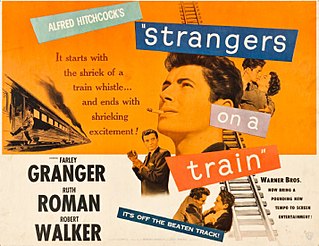
Strangers on a Train is a 1951 American psychological thriller film noir produced and directed by Alfred Hitchcock, and based on the 1950 novel Strangers on a Train by Patricia Highsmith. It was shot in late 1950, and released by Warner Bros. on June 30, 1951, starring Farley Granger, Ruth Roman, and Robert Walker.
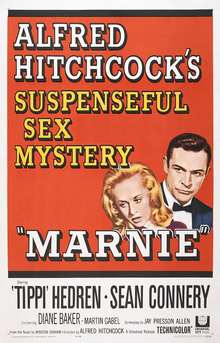
Marnie is a 1964 American psychological thriller film directed by Alfred Hitchcock from a screenplay by Jay Presson Allen, based on the 1961 novel of the same name by Winston Graham. The film stars Tippi Hedren and Sean Connery.

The Lodger: A Story of the London Fog is a 1927 British silent thriller film directed by Alfred Hitchcock and starring Marie Ault, Arthur Chesney, June Tripp, Malcolm Keen and Ivor Novello. Hitchcock's third feature film, it was released on 14 February 1927 in London and on 10 June 1928 in New York City. The film is based on the 1913 novel The Lodger by Marie Belloc Lowndes and the play Who Is He? co-written by Belloc Lowndes. Its plot concerns the hunt for a Jack the Ripper-like serial killer in London.
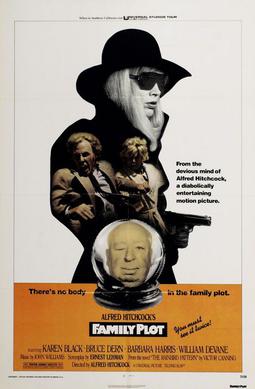
Family Plot is a 1976 American black comedy thriller film directed by Alfred Hitchcock in his final directing role. It was based on Victor Canning's 1972 novel The Rainbird Pattern, which Ernest Lehman adapted for the screen. The film stars Karen Black, Bruce Dern, Barbara Harris and William Devane; it was screened at the 1976 Cannes Film Festival, but was not entered into the main competition.

The Man Who Knew Too Much is a 1956 American mystery thriller film directed and produced by Alfred Hitchcock, starring James Stewart and Doris Day. It is Hitchcock's second film using this title, following his own 1934 film of the same name but featuring a significantly altered plot and script.
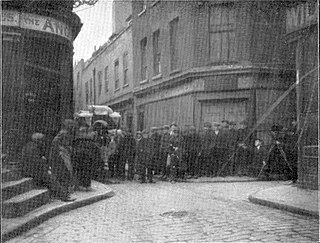
In 1922, Alfred Hitchcock obtained his first shot at directing for Gainsborough Pictures with the film Number 13 but due to financial difficulties it was never completed.

Goodbye Piccadilly, Farewell Leicester Square is a 1966 novel by Arthur La Bern, which was the basis for Alfred Hitchcock's film Frenzy (1972).

Before the Fact (1932) is an English novel by Anthony Berkeley Cox writing under the pen name "Francis Iles". It tells the story of a woman marrying a man who is after her inherited money and prepared, it seems, to kill her for it. Whether he does succeed in the end, or whether she has been imagining his plots, is left unclear. Together with the previous Iles book Malice Aforethought (1931), it can be placed in the category of psychological suspense novel. Elements of the story were used for the 1941 American film Suspicion, directed by Alfred Hitchcock.
Alfred Hitchcock's films show an interesting tendency towards recurring themes and plot devices throughout his life as a director.
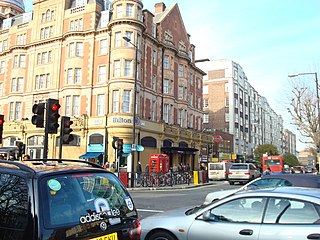
The Hilton London Hyde Park is a hotel on Bayswater Road, overlooking Hyde Park and Kensington Gardens in Central London. It was opened in July 1999.

The Girl is a 2012 British television film directed by Julian Jarrold, written by Gwyneth Hughes and produced by the BBC and HBO Films. The film stars Sienna Miller as Tippi Hedren and Toby Jones as Alfred Hitchcock. It is based on Donald Spoto's 2009 book Spellbound by Beauty: Alfred Hitchcock and His Leading Ladies, which discusses the English film director Hitchcock and the women who played leading roles in his films. The Girl's title was inspired by Hitchcock's alleged nickname for Hedren.




















